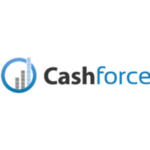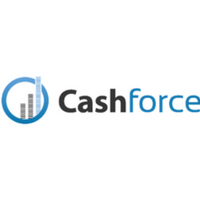Release your Working Capital and Treasury potential
| 26-09-2019 | treasuryXL | Cashforce |

Deriving meaningful information from extremely large volumes of data from multiple sources is time-consuming and inefficient for any finance or treasury function; whether that be to provide financial data or forecasts to the market, banks or internal stakeholders, the challenges are myriad. But the department cannot forecast without that insight.
To compound the problem, in a world where volatility and uncertainty have become the norm, treasurers are now part of their organisation’s strategic leadership and must increasingly find ways of bolstering their approach to gain a much-needed competitive edge.
This article considers three of the most common challenges for finance and treasury departments today, and explores how the Cashforce platform solves them:
- Harnessing big data
- Advanced cash flow forecasting
- Implementing new technology.
HARNESSING BIG DATA: THE BIG PICTURE
Like many other departments within a business, most treasury functions have large volumes of consolidated data in complex spreadsheets, very rarely providing easy access to transactional data. Decision making is difficult as the answers are often buried in complicated formulas and countless links to excel templates. The problems caused by an inability to identify relevant data are compounded by any number of missed opportunities and risks. To put the big data problem into perspective, a report from McKinsey & Company suggests that a typical organisation uses less than 1% of the collected data to make decisions.
“A typical organisation uses less than 1% of the collected data to make decisions”
A major British retailer faced this very challenge — large volumes of data embedded in 10 different ERPs and no consolidated view on what was really tied up in working capital. To unlock the potential that already existed within the retailer’s own data, they asked Cashforce to implement a cloud-based solution with detailed dashboards to drill down from a consolidated position to core data by integrating with ERP systems. Within three weeks, this opened up over 20 million transactions per month, ready for analysis.
Cashforce‘s big data engine accesses vast volumes of data quickly and easily via a library of APIs and connectors which take raw data from multiple sources (including ERPs, Treasury Management Systems, data warehouses and banking platforms) and transforms it into meaningful, easy to understand dashboards — empowering the user with the big picture.
ADVANCED CASH FLOW FORECASTING: ML AND AI FOR INTELLIGENT SIMULATION
If cash is king, then accuracy in cash forecasting is the prodigal son. PwC‘s 2017 and 2019 Global Corporate Treasury Survey shows how forecasting accuracy is key to managing and running a business efficiently, and it continues to be a high ranking C-suite priority. A lack of transparency over data means that output from generic treasury management systems inaccurate and unfocused. To maximise predictive, trend-based behaviour you need access to the raw data. But how?
Far from the futuristic concepts, they were perceived to be, machine learning and artificial intelligence are being deployed right now, with stunning results. Smart algorithms are providing proactive optimisation actions to generate highly accurate forecasts, and intelligent simulation engines enable companies to consider multiple scenarios and measure their impact. Cashforce is unique in that the platform can be set up quickly, even in the most complex environments, seamlessly connecting with any ERP system. As a result, finance departments can be turned into business catalysts for cash generation opportunities throughout the company.
“If cash is king, then accuracy in cash forecasting is the prodigal son”
In the case of education company Pearson, CFO James Kelly was looking to improve the cash forecasting abilities of a TMS that was the equivalent of an Excel spreadsheet.
“If you don’t have predictability, you can end up overriding your forecast and saying ‘nine days out of ten I’m spot on, but there’s the risk that one day out of ten I’ll be miles out’ – so you decide to hold a lot of cash back just in case,” Kelly said.
Pearson partnered with Cashforce to deploy an AI-supported forecasting solution which integrated with the group’s systems, replaced manual keying with robotics, and provided multiple AI algorithms offering unprecedented insights into cash flow. AI-based forecasting unlocked significant amounts of trapped cash overseas, and balances were reduced by over £100 million — freeing up cash to invest elsewhere in the business instead of drawing down on credit facilities.
IMPLEMENTING NEW TECHNOLOGY: A NIMBLE APPROACH TO ONBOARDING
When it comes to the universal challenge of onboarding, the focus must be on simplification and streamlining. Central to this is the alignment of a library of connectors to data sources. This is why Cashforce’s working capital module integrates with multiple ERPs to provide granular detail within operational transactional data. And because the user organisation may be running different or multiple ERPs in different regions, we recommend an ERP-agnostic solution.
The operational data in an ERP only provides half a story so our solution also sits on top of treasury systems to provide a holistic cash flow forecast combining both treasury and operations with data based on a client’s unique reporting requirements.
End-user flexibility is a key feature of any financial system today, so user roles can be defined and users added or removed by a client administrator. The additional benefit of a SAAS platform means no heavy lifting is required by your IT department.
“With Cashforce, finance departments can be turned into business catalysts for cash generation”
In the course of a recent implementation, British manufacturer was faced with the challenge of Brexit-related contingency planning, when it decided to stockpile certain FDA-approved products destined for the US market. The firm’s initial focus was on cash management and forecasting but refocused mid-way on working capital management with a major focus on inventory and traceability. Such a change in scope can often lead to significant delays in delivery, but with Cashforce driving the process, the project was delivered on time.
About Cashforce
Cashforce is a smart cash flow management and cash flow forecasting platform for working capital intensive businesses. Our technology is helping Finance departments save time and money by offering cash visibility & pro-active cash saving insights. CFOs and Finance departments can drill down to the cash flow drivers and smart algorithms are applied providing pro-active optimization actions. An intelligent simulation engine enables companies to consider multiple scenarios and measure their impact. As a result, finance departments can be turned into business catalysts for cash generation opportunities throughout the company.
Cashforce is unique because it offers full transparency into what exactly drives the cash flow of complex (multinational, multi-bank, multi-currency, complex ERP(s)) enterprises, typically with revenues between € 50 million and € 10 billion. It is the first cash management platform that builds a bridge between the treasury department and the actual business departments such as sales, logistics and purchasing. Unlike other enterprise software players, the Cashforce platform can be piloted within a few hours in complex environments, seamlessly connecting with any ERP system.
Currently users in over 40 countries are using our platform to streamline their cash management processes. Cashforce has proven its value in various complex environments, including environments where in-house banking, cash pooling, POBO, ROBO, etc. are used.
Cashforce is headquartered in Belgium with an office in New York City, serving customers such as Hyundai, Portucel, Alcadis among many others worldwide.











